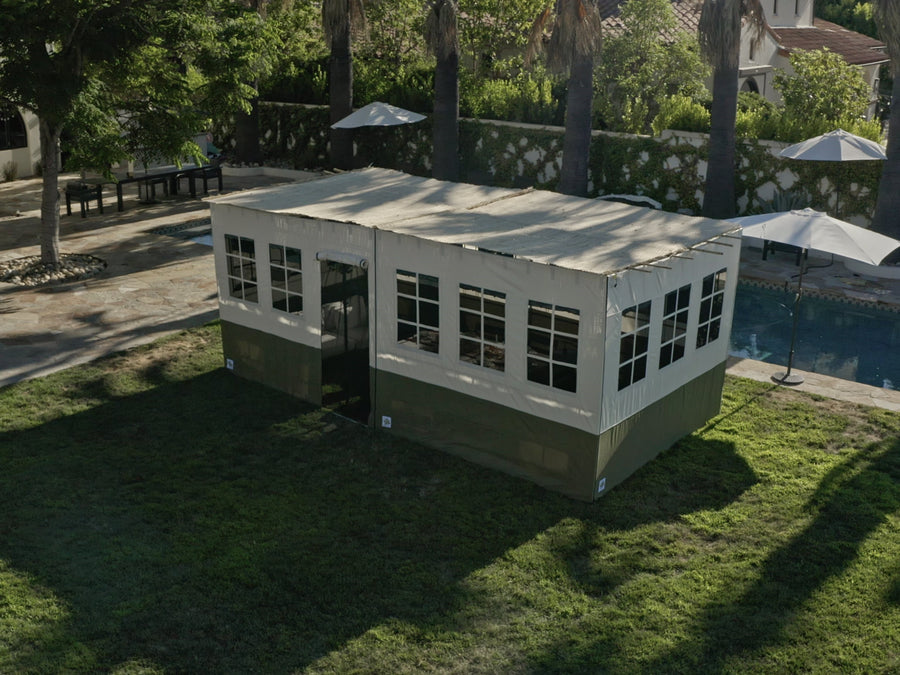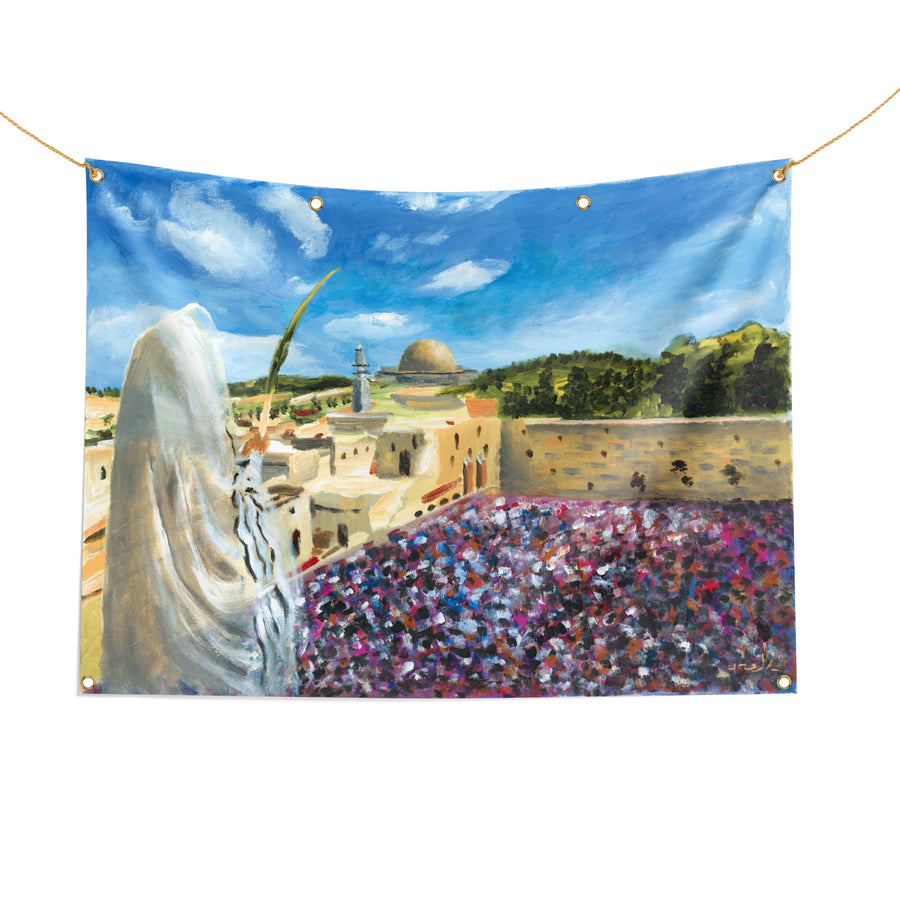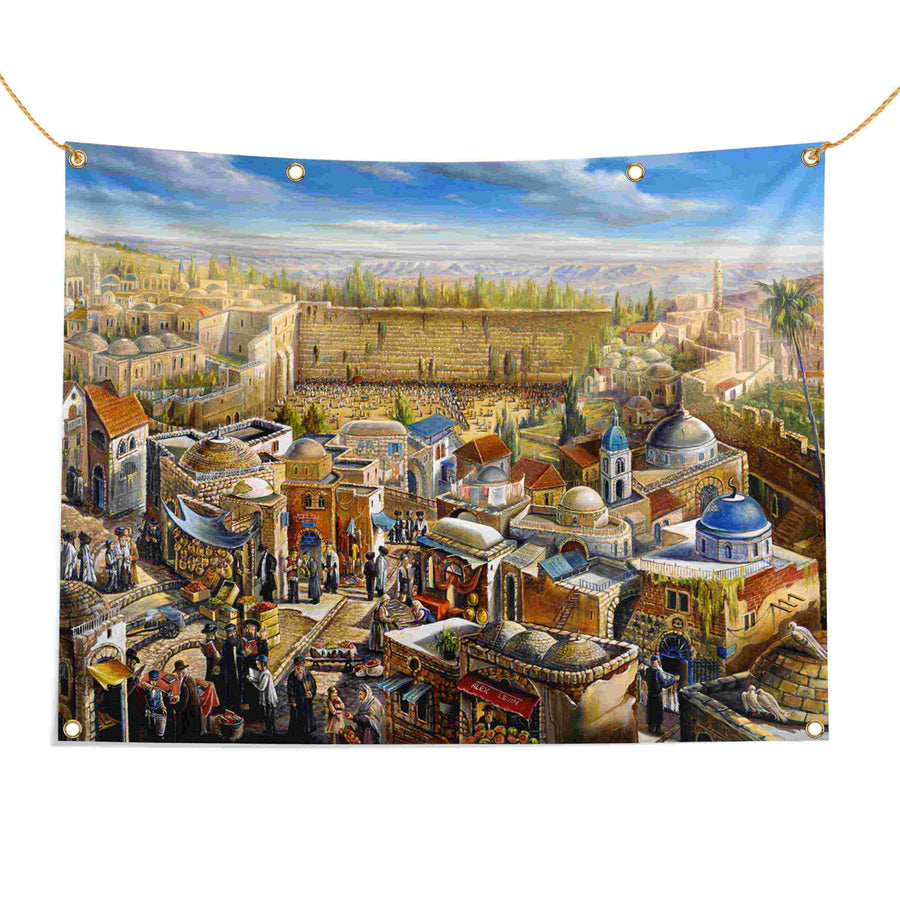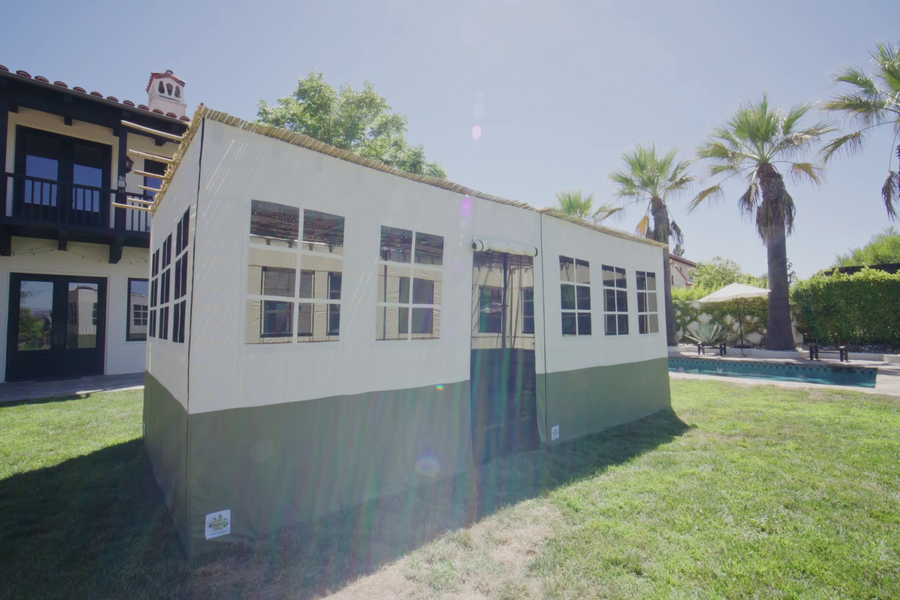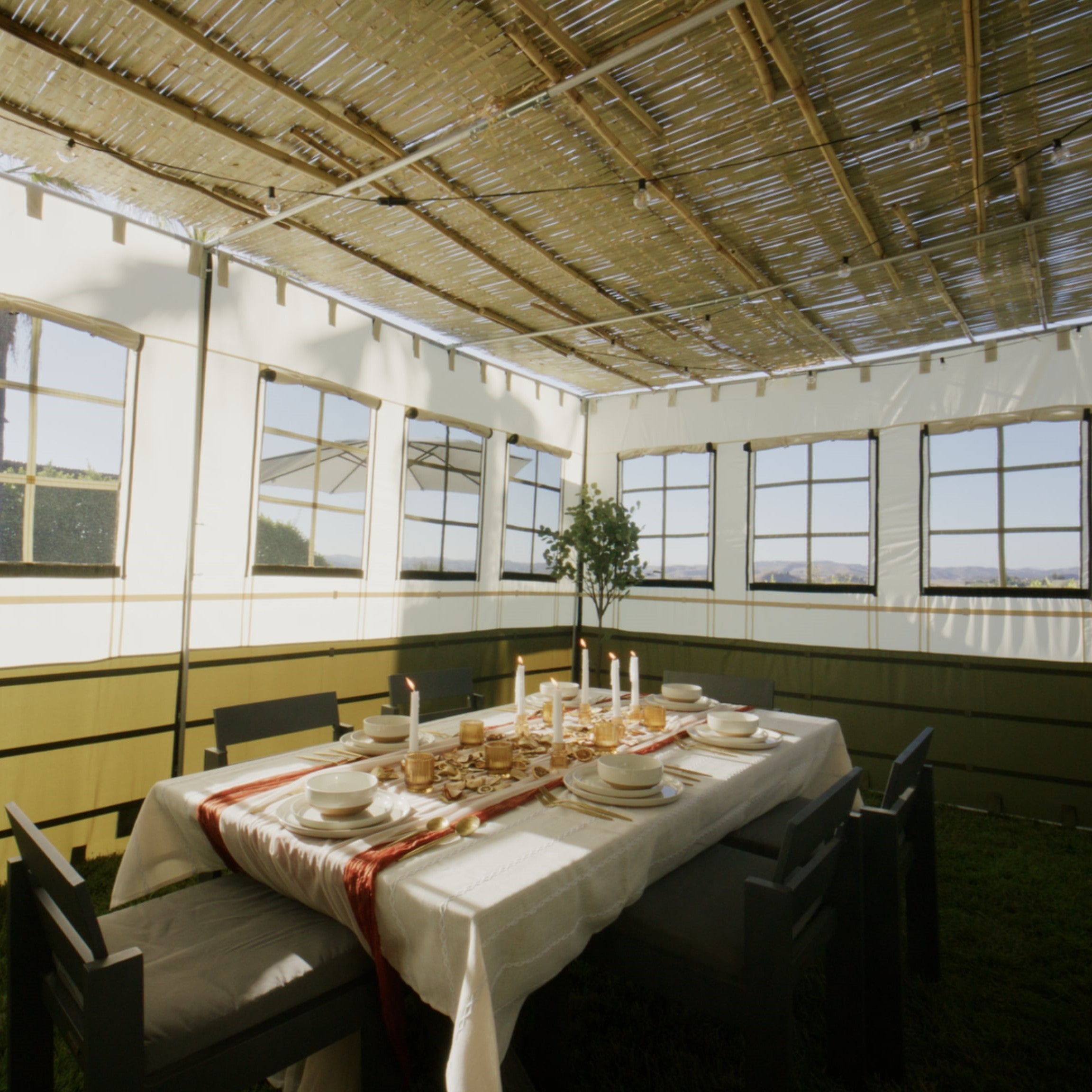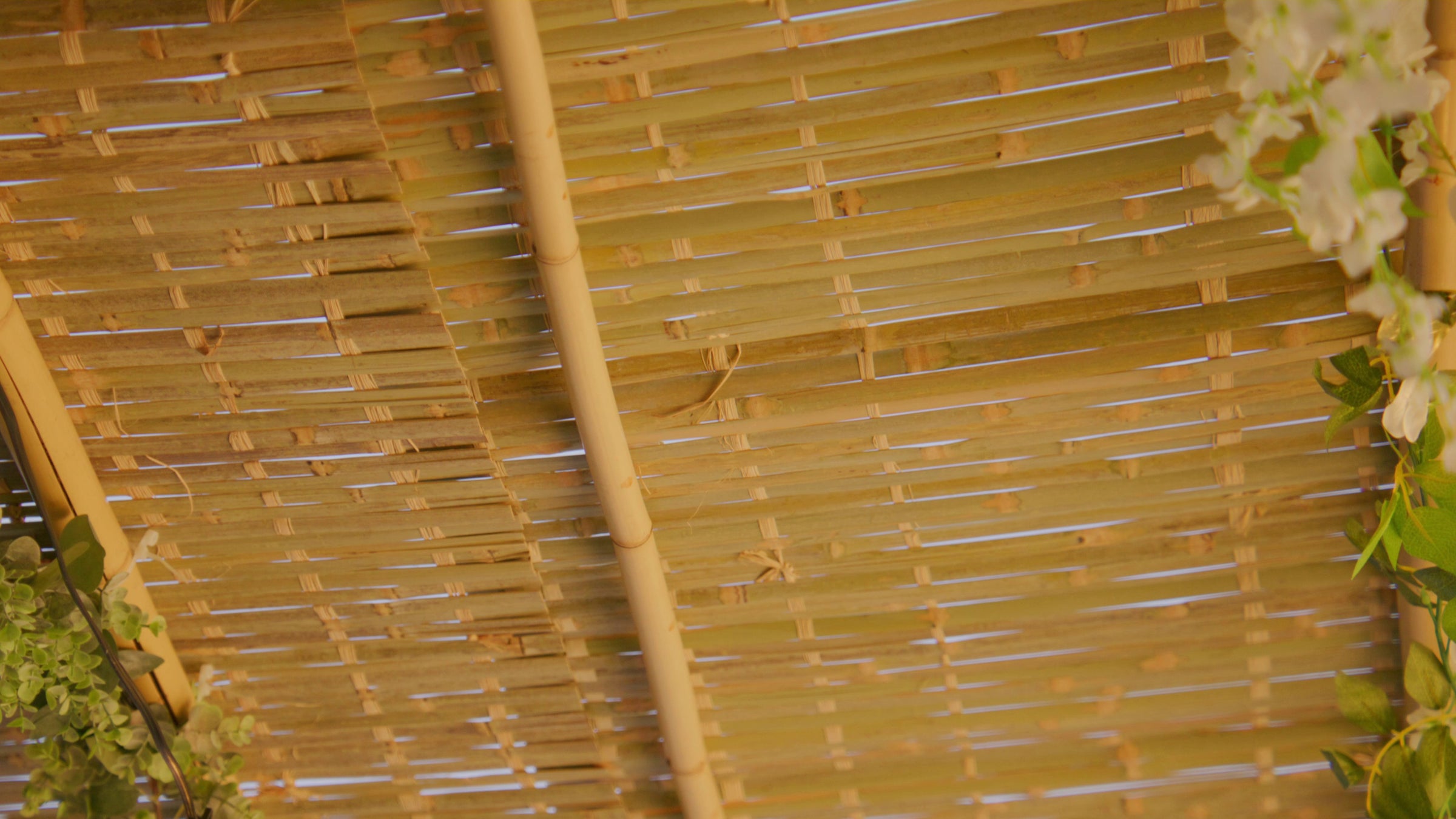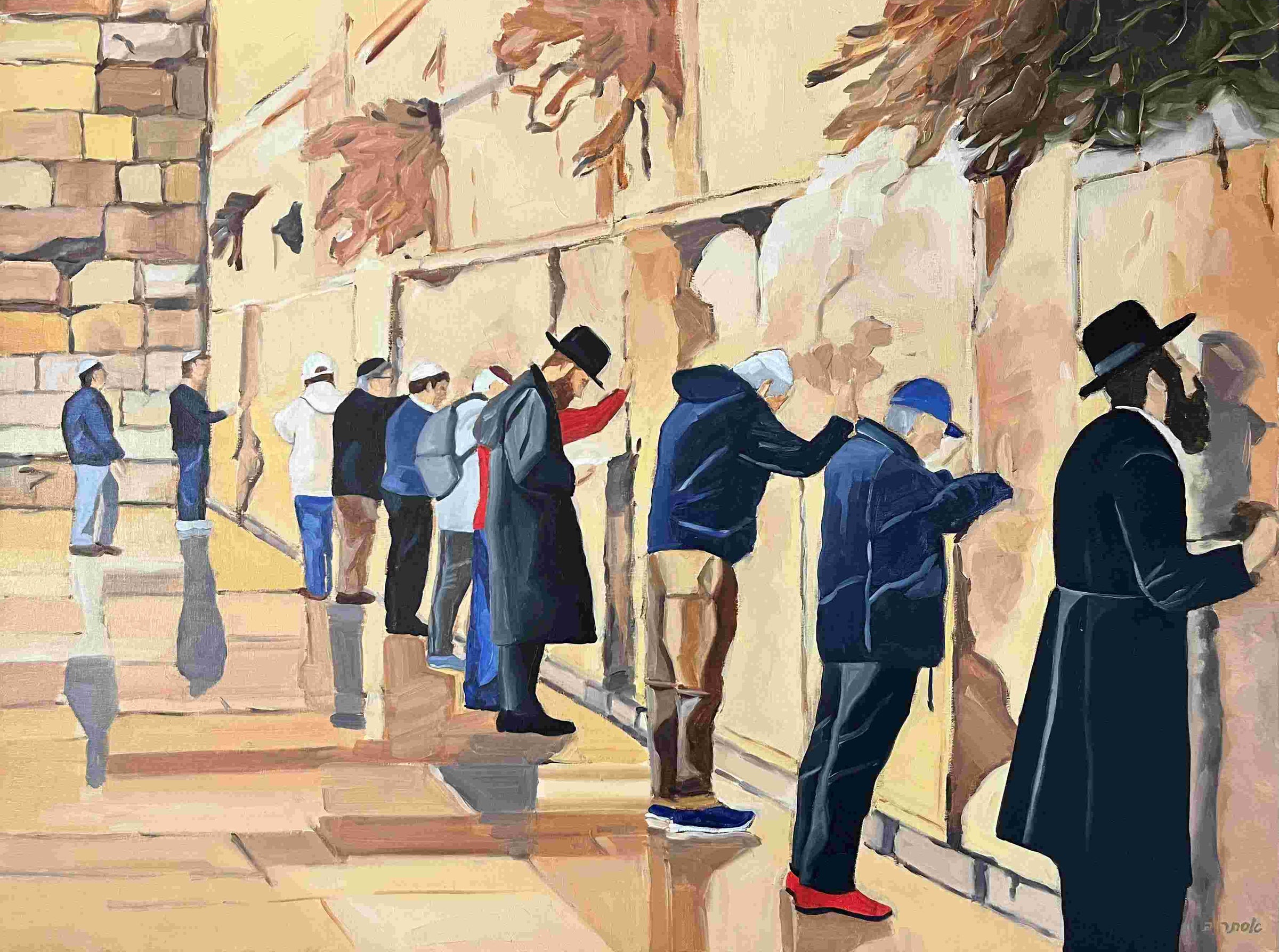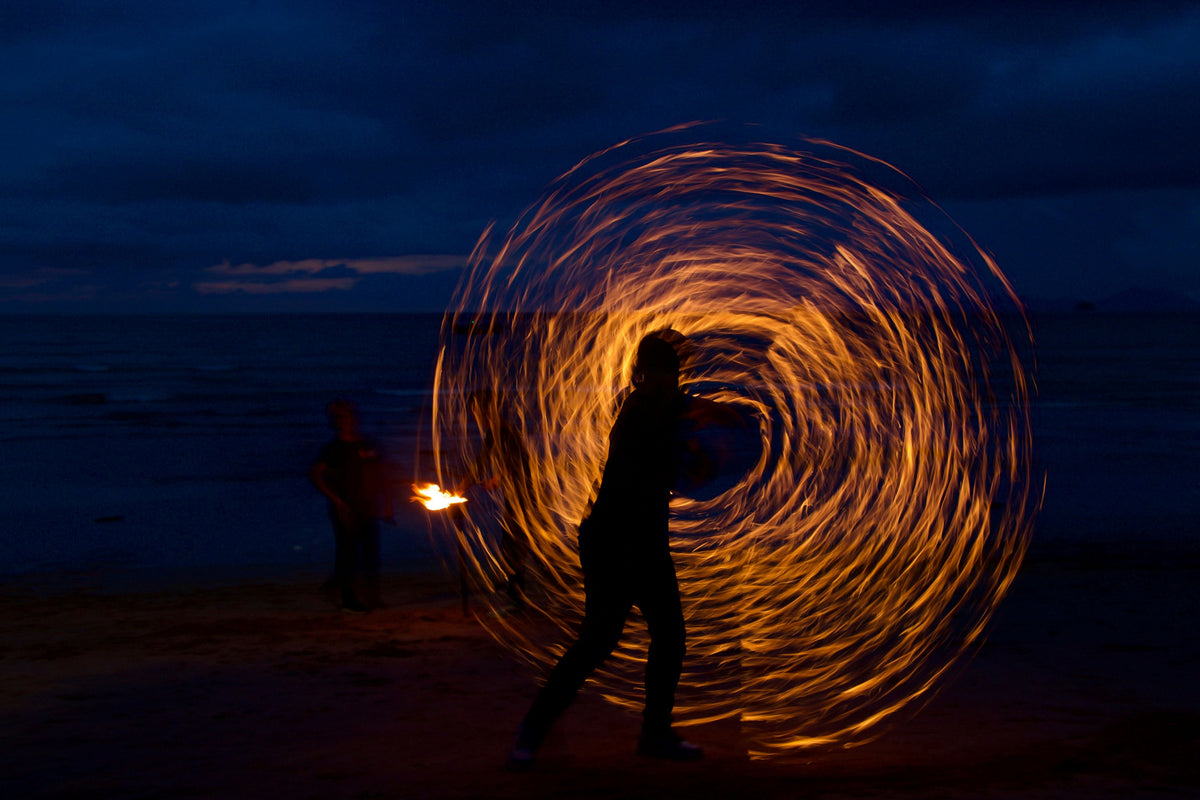

Table of contents
If you think you've seen joy, think again – because according to the Talmud, “One who never saw the Simchat Beit Hashoevah (Water-Drawing Celebration) has never seen joy in his life. ” Back in the day, when King Solomon’s Temple stood tall in Jerusalem, the Simchat Beit Hashoeva celebration was the must-attend event of the year.
Picture it: Jewish families of all backgrounds – farmers, merchants, scholars – flocking to Jerusalem from all corners of Israel and beyond, ready to party non-stop for eight days. The Temple Mount was the place to be, and the Simchat Beit Hashoeva festivities were nothing short of spectacular.
Simchat Beit Hashoeva: Jerusalem Lights Up the Night
As the first day of Sukkot drew to a close, the Temple courtyard transformed into a grand amphitheater. Temple workers hustled to set up makeshift bleachers – an ancient version of a mechitzah (barrier separating men and women) – where women stood on the higher tiers, while men gathered below. Boys armed with torches scurried up ladders to light massive candelabras, filling Jerusalem with light as bright as day. The scene was set for a celebration like no other.
Music, Magic, and Majestic Juggling
During the Simchat Beit Hashoeva, music filled the air as trumpets blared, flutes played, and drums thundered. The most revered sages, men of great wisdom (and probably long white beards), put on a show that would rival any modern circus. Rabban Shimon ben Gamliel, the head of the Sanhedrin (supreme court), juggled eight flaming torches with finesse, while the rest of the crowd sang and danced with unbridled joy. It was a sight to behold – one that Rabbi Yehoshua ben Levi declared as the pinnacle of the Simchat Beit Hashoeva celebration.
The Divine Splash: The Water-Pouring Ritual
But it wasn’t just about the spectacle. The real magic happened at dawn with the water-pouring ritual. Fresh water from the Mayan Hashiloach spring was brought into the Temple amidst fanfare, and poured alongside the wine offering on the altar. This simple act held deep spiritual significance, believed to draw divine inspiration. The Jerusalem Talmudexpands:
“ Rabbi Yehoshua ben Levi said, “Do you know why it was called ‘The Celebration of the House of Drawing Water?’ (Simchat Beit Hashoeva) Because from there they drew divine inspiration.”
Rabbi Jonah said, “The prophet Jonah ben Amitai was one of the holiday pilgrims to the Temple. He walked into the Simchat Beit Hashoeva and the divine spirit rested upon him.”
From this we understand that the divine spirit only rests upon a joyous heart. As the verse says, “As soon as the musician began to play music, the spirit of G‑d rested upon the prophet.”
As Rabbi Yehoshua ben Levi explained, the Simchat Beit Hashoeva wasn’t just about drawing water – it was about drawing divine energy, a connection that could only be made with a joyful heart.
Six Nights of Non-Stop Celebration
For six nights (minus Shabbat, of course), the Simchat Beit Hashoeva continued, with music, dancing, and celebrations that lasted until the morning offerings. It was a time when sleep took a back seat, and joy was the order of the day.
Keeping the Spirit Alive: From Jerusalem to Brooklyn
Even after the Temple’s destruction, the spirit of Simchat Beit Hashoeva lives on. Jews continue to gather during Sukkot to sing, dance, and tell stories, keeping that original Simchat Beit Hashoeva joy alive. In fact, in 1980, this ancient tradition found new life in Brooklyn, N.Y. The Rebbe of Chabad-Lubavitch formally reintroduced the celebration, turning the streets of Crown Heights into a modern-day Jerusalem. Thousands of Jews danced and sang through the night, bringing the joy of Sukkot's Simchat Beit Hashoeva to the streets, and still do so today!
Dance Like It’s 5741
The Rebbe's message was clear: the celebration of Simchat Beit Hashoeva wasn’t confined to the Temple or even to Jerusalem. Wherever there is a Sukkah, the spirit of the Simchat Beit Hashoeva is alive and well. And with it comes the divine energy, the special Ushpizinguests [link to ushpizin], and the timeless joy that makes Sukkot the most festive holiday in the Jewish calendar.
So, whether you're in Brooklyn or anywhere else in the world, grab your dancing shoes – because the biggest party in Jewish history is still going strong.
